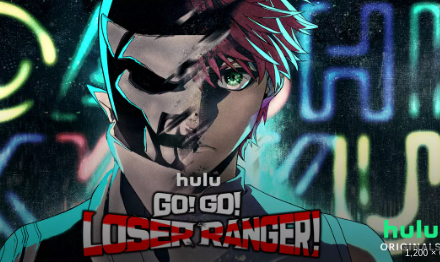English Dub Review: Paprika
Even over a decade after his untimely passing, Satoshi Kon is still remembered as one of the most iconic anime film directors. Perfect Blue has had a lasting legacy to the point people note the influences in it in Darren Aronofsky’s Black Swan. Tokyo Godfathers is an underrated addition to the holiday movie pantheon. Paranoia Agent, his sole foray into creating and fully writing a TV show, is a trippy and disturbing nightmare. And while I haven’t seen Millenium Actress or have heard many people talk about it, I’m sure it’s probably just as good as the rest. However, Kon’s final film, Paprika, is where he fully dove into both his love of film and filmmaking and tied it to his unhinged imagination. Based on the 1993 novel, the movie follows a research team who work to stop a terrorist that has obtained an experimental device which can put someone in someone else’s dream, wreaking havoc as they absorb more people into their plans. Dr. Atsuko Chiba, the head of the team, uses her dream alter-ego, Paprika, to investigate, while also tying in a detective, Toshimi Konakawa, who has his own unresolved dreams he can’t seem to shake.
Considering Paprika was first released nearly twenty years ago (2006, to be specific), it’s almost surprising that it’s held up as well as it has. The same could be said for all of Kon’s previous work, but Paprika definitely does the most in terms of out there visuals and tests the limits of mid-2000’s CG tech of the time. It’s actually pretty timeless in terms of aesthetics, even the design of the “DC Mini” dream device that drives the story, despite the massive leaps that technology has taken since the film’s release. Likewise, the film itself still has a strong and sneaky way of getting ahold of you as you’re watching. A seemingly lucid and grounded scene will play out like you might expect, a small oddity will come and go unnoticed, until they pile up and turn into a tidal wave of nonsensical madness, much like how you might find yourself in a dream. These become a little easier to spot over the course of the film, but by that point, you’re already gripped into the story itself, as well as captivated by the endless visual subversions that keep you on your toes. For instance, one scene will get repeated with different audio later on to provide a different context or perspective, but also to show how someone’s dreams and memories interfere with their judgment, as well as how that can be manipulated by others.
If I had to point to any faults or weak points in the movie, it would probably be with the reveal of the culprit. There’s certainly a fun and interesting journey to get there, but the motivations and end goals of the antagonist end up feeling pretty shallow. The ending also may be just a bit too strange to fully stick the landing, but it doesn’t damage the movie by any means. Ultimately, it’s a unique visual experience that only Satoshi Kon could’ve given us, and unfortunately the last he could give us before succumbing to pancreatic cancer. There’s still some hope that his last, unfinished film, Dreaming Machine, could be completed at some point, even though finding funding is apparently a major hurdle. Given the name, it’s likely it would cover similar themes as Paprika, as well as his other works. But even without it, we can see the dreams that Kon gave to others, that they share with their peers and their loved ones and then turn into art. And maybe if enough of those dreams come together, we’ll see that last film. But if not, we can always dream.



























Too bad. The show is complete garbage and a waste of everyone's time.